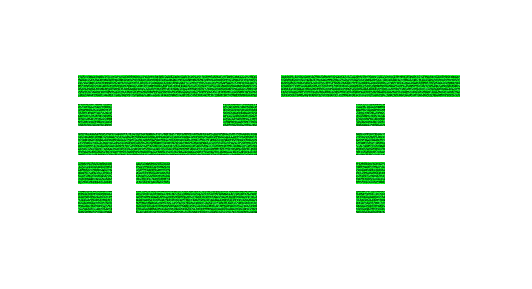Glossary-in-60 Seconds
- Tech stack = every app your team touches: email, CRM, help-desk, e-sign—anything with a login.
- SaaS (Software-as-a-Service) = cloud software you rent monthly instead of installing on a server in the broom closet.
- pupm = per-user-per-month (because the industry needed one more acronym).
- vCIO (virtual Chief Information Officer) = part-time strategist who picks, integrates, and polices that stack so you don’t drown in “shelf-ware.”
1. The Short Version
Plan on spending somewhere between $200 and $450 pupm in 2025 if you’re a garden-variety knowledge-work shop running mostly cloud tools. Scrappy start-ups can squeeze into ~$100, while SaaS-happy scale-ups and dev houses often blast past $500.
2. Where Those Numbers Come From
| 2024-25 benchmark | Annual spend/employee | Monthly equivalent | Notes |
|---|---|---|---|
| CloudEagle “SaaS Spend Trends” | $1 000 – $3 500 | $83 – $292 | Broad multi-industry sample cloudeagle.ai |
| KeySubscriptions (SMB focus) | $1,400 small company $2,100 medium company $2,600 large company | $117 / $175 / $217 | Size-adjusted spend keysubscriptions.com |
| Zylo “2025 SaaS Management Index” | $4 830 | $403 | 22 % YoY jump across 40 M licences zylo.com |
| Productiv “2024 State of SaaS Spend” | $5 607 | $467 | Mid-market edging past SMBs productiv.com |
| DevSquad (older Productiv data) | $9 643 | $804 | Outlier—includes lots of duplicate apps devsquad.com |
Why the spread?
- What’s being counted – some studies tally only IT-managed apps; others add every Canva, Grammarly, and “free-for-30-days” trial that got expensed.
- Portfolio discipline – 51 % of licences sit unused in an average month zylo.com. Good FinOps chops slice that waste to near 0.
- Industry mix – Dev shops pay for GitHub, CI/CD, and observability; legal firms don’t.
- Geography & FX – most reports convert to USD; U.S. licences often cost more than EU/APAC equivalents.
3. A “Typical” 2025 Stack by Category
| Category & examples | Typical $/user/mo | Reality check |
|---|---|---|
| Core productivity (Microsoft 365, Google Workspace) | $6 – $36 | $6 for M365 Basic, $22 for Business Premium; E3/E5 push into $33+ microsoft.commicrosoft.com |
| Chat & meetings (Slack, Teams, Zoom) | $8 – $17 | Slack Pro $8.75 mo slack.com • Zoom Pro $16.99 mo zoom.us |
| File storage & e-sign (Dropbox, DocuSign) | $5 – $12 | Often bundled with M365/Google; DocuSign starts at $10 |
| CRM / RevOps (HubSpot, Salesforce) | $25 – $100 | Seat tier, add-ons, and integrations drive the swing |
| Project / task (Asana, Jira, Monday) | $10 – $25 | Engineering orgs live near the top of the band |
| Security stack (SSO, EDR, MFA) | $8 – $25 | Duo MFA $3; full EDR or SASE can hit $20+ |
| Finance / HR (QuickBooks, Gusto, Rippling) | $5 – $20 | QBO allocates ~$4/user in a 25-seat firm; payroll tools scale with headcount |
| Dev & data tools (GitHub, Datadog, Snowflake) | $30 – $150 | Only if you build software or crunch big data |
Add a 10-20 % buffer for “misc. & shadow IT” and voilà—you’ve landed squarely in the $200–$450 corridor.
4. Adoption & Integration: Where ROI Lives (or Dies)
Sticker-shock isn’t the biggest SaaS risk—under-utilisation is.
Zylo’s 2025 index shows the average company uses barely 47 % of the licences it pays for—the other 53 % sit idle, torching cash every month. zylo.com Other studies peg waste at 33 – 48 % of total software spend, especially in firms without a formal owner for training and integration. openit.comzylo.com
That’s where a (v)CIO earns their keep:
| CIO Duty | What It Looks Like in Practice | ROI Impact |
|---|---|---|
| On-boarding & training | Fast-start playbooks, lunch-and-learns, recorded micro-courses | Drives adoption → lifts utilisation above the 50 % kill-zone |
| Process mapping | Aligns click-flows with real-world tasks; kills redundant steps | Cuts shadow-IT sign-ups and duplicate data entry |
| Integration oversight | SSO everywhere, consistent APIs, data lake feeds | Eliminates “swivel-chair” work; boosts reporting accuracy |
| Utilisation audits | Quarterly licence-reclaim sprints | Converts zombie seats into instant cost saves |
| Change management | Roadmaps, champions, feedback loops | Keeps rollouts from fizzling after week one |
Worst-case scenario: you shell out $400 pupm and staff limp along in spreadsheets because no one showed them how to click the automate button. A fractional CIO costs far less than that waste—and unlike shelf-ware, they actually work.
With the right governance in place, the same 25-seat Lubbock firm can swing from sub-50 % utilization (money bonfire) to 80 %+ (money printer). That drops effective SaaS cost from ~$400 to ~$240 per productive user, all without cancelling a single business-critical app.
5. Bottom Line
- Budget ~$200–$450 per head as the real cost of working in the cloud next year.
- The delta between $200 and $450 is discipline, not destiny—51 % waste proves it.
- A fractional vCIO (or, hey, Robb.Tech’s Partner Program) turns that spend from overhead into leverage.
Need an honest SaaS gut-check?
Robb.Tech benchmarks West Texas stacks against the numbers above, spots every zombie licence, and maps the shortest route to sub-$250 pupm. Book a free 15-minute call—worst case, you leave with a punch-list; best case, you stop funding Vendor Island vacations.

